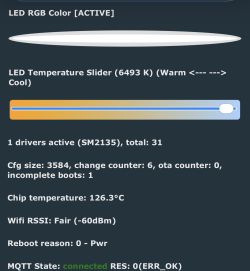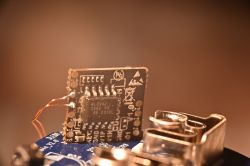Please send the binary file here, I can extract config for you.
Have you seen our Hass Pairing tutorial?
Helpful post? Buy me a coffee.
Have you seen our Hass Pairing tutorial?
Czy wolisz polską wersję strony elektroda?
Nie, dziękuję Przekieruj mnie tam







 [/url] I only have [started the driver.
[/url] I only have [started the driver.
startDriver BL0942 9600
 ( 230 V, 0.26 A, 60 W) as given in Web-App. The following picture shows the situation after calibration with 40W bulb. Reasonable values (except the power value of 60 W, of course.)
( 230 V, 0.26 A, 60 W) as given in Web-App. The following picture shows the situation after calibration with 40W bulb. Reasonable values (except the power value of 60 W, of course.) 



{
"vendor": "Tuya",
"bDetailed": "0",
"name": "Full Device Name Here",
"model": "enter short model name here",
"chip": "BK7231N",
"board": "TODO",
"flags": "1073742848",
"keywords": [
"TODO",
"TODO",
"TODO"
],
"pins": {
"6": "BL0937CF;0",
"7": "BL0937CF1;0",
"8": "WifiLED;1",
"10": "Btn;1",
"23": "Btn;1",
"24": "BL0937SEL;0",
"26": "Rel;1"
},
"command": "backlog PowerSave 1; startDriver NTP; startDriver BL0937;ntp_setServer 192.168.5.5; SetupEnergyStats 1 60 5; VCPPrecision 0 1 1 2; VCPPublishThreshold 10 0.2 10 0.1; SetStartValue 1 0",
"image": "https://obrazki.elektroda.pl/YOUR_IMAGE.jpg",
"wiki": "https://www.elektroda.com/rtvforum/topic_YOUR_TOPIC.html"
}


